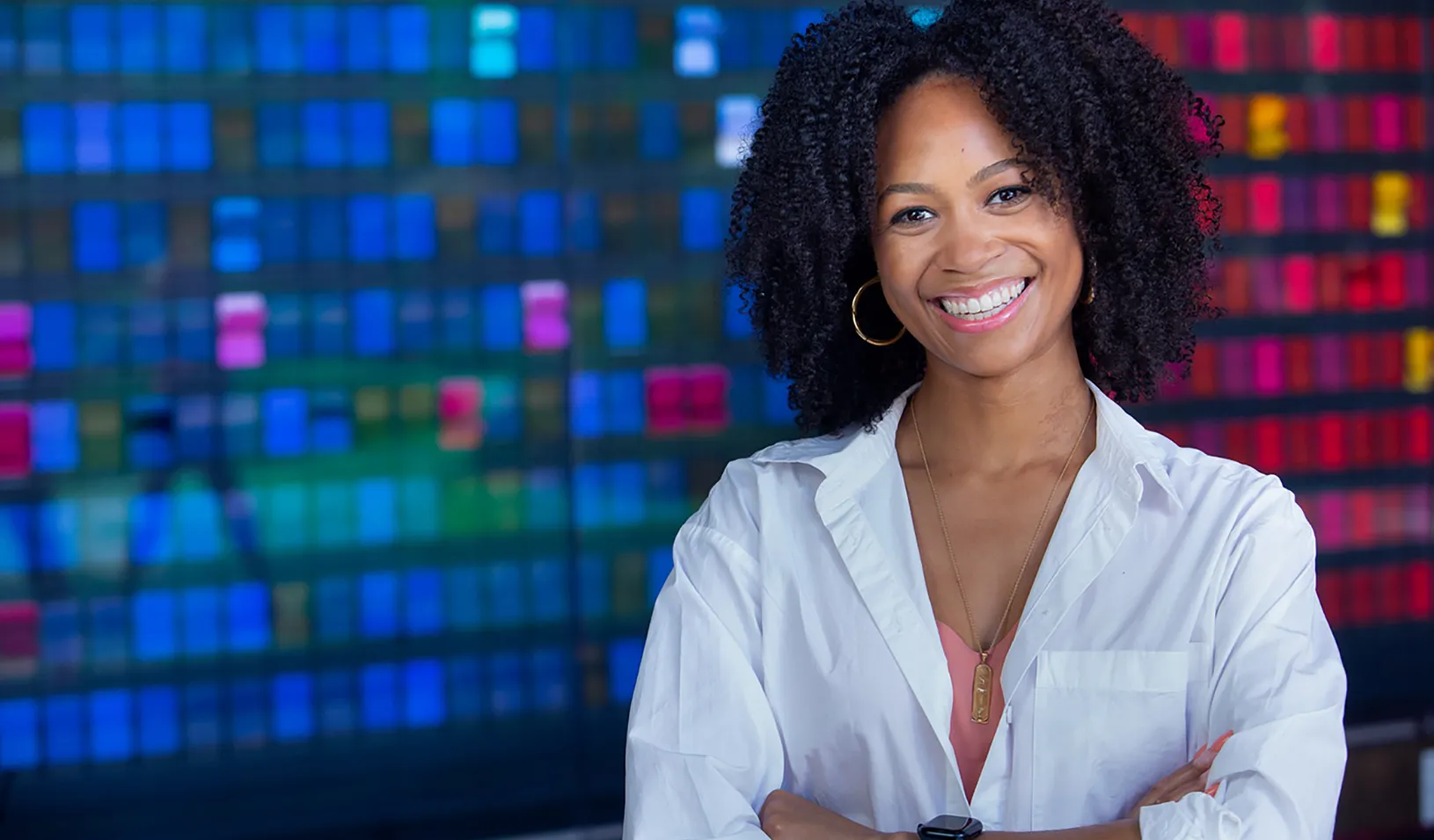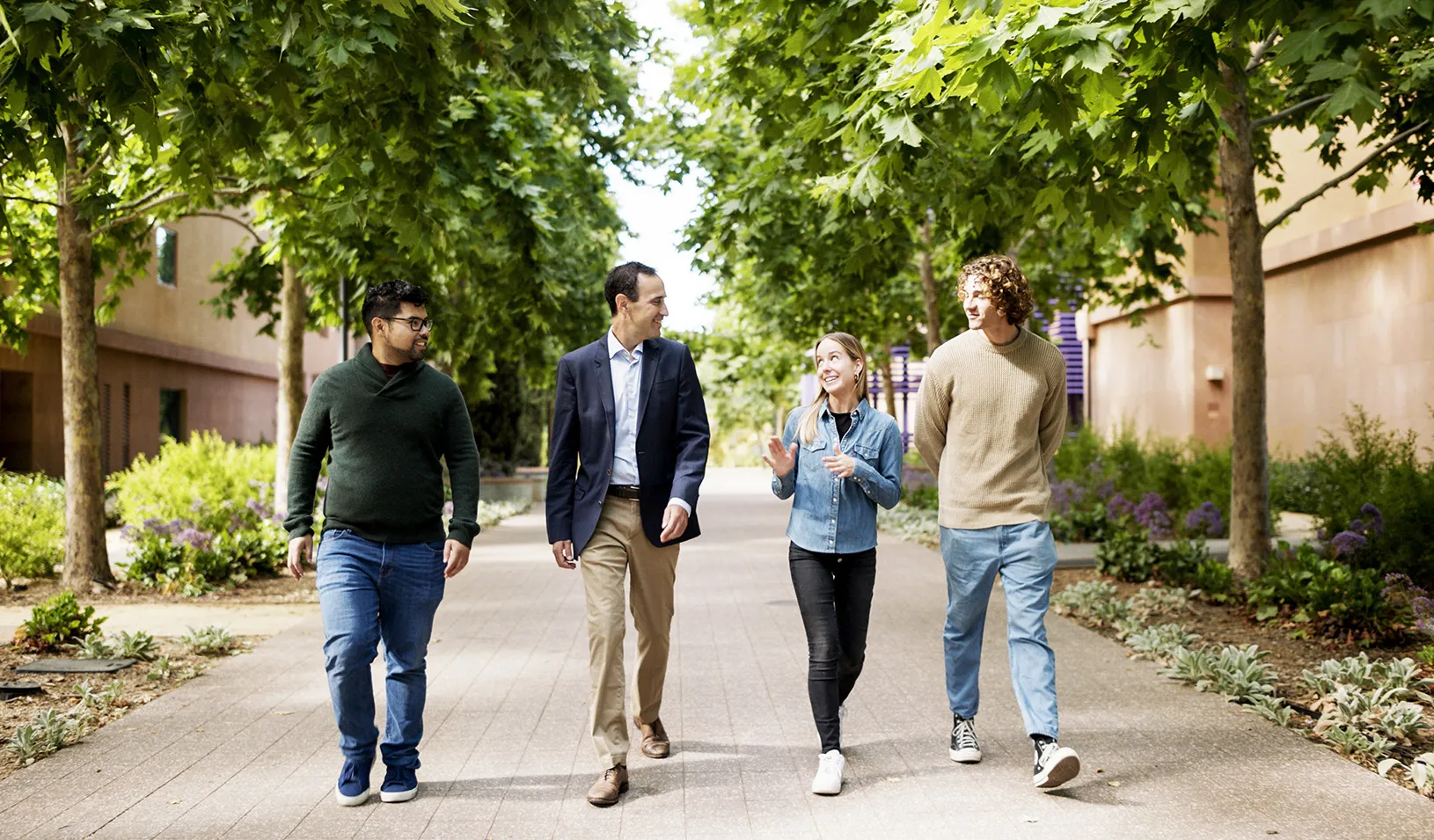How We Adapted
If you want to move a business school’s curriculum online in a single weekend, you better practice what you teach.
August 06, 2020
Illustration by Irene Servillo
At 9:34 p.m. on Friday, March 6, Grace Lyo was relaxing on the couch in her apartment in Menlo Park watching a movie when she got a text from her boss, Brian Lowery.
“Urgent! Are you available?” wrote Lowery, a professor of organizational behavior and a senior associate dean for academic affairs at Stanford Graduate School of Business. “Check your email. Come into Zoom.”
Lyo, an assistant dean who leads the Teaching and Learning Hub, a unit within Stanford GSB that provides teaching support to faculty, was surprised to learn that an emergency Zoom meeting of all senior staff was in progress. She checked her inbox and understood why: At 8:19 p.m., Stanford Provost Persis Drell had sent an email announcing that in an effort to reduce physical contact and prevent the spread of COVID-19, all classes at the university would move online as of Monday morning.
“Oh, wow,” Lyo thought. “This is going to be an interesting ride.”
At 11:01 that same night, Stanford GSB’s senior staff sent an email to the entire faculty notifying them of the shift, and on Saturday morning, Dean Jonathan Levin tracked a Google spreadsheet as instructors indicated whether they could in fact move their courses online for the last week of winter quarter.
“I sat there watching for an hour as faculty populated this Google Sheet, and every single one of them wrote in and said, ‘I got this,’” he recalls.
Not that some didn’t need help. The school was relatively well poised to go digital: It already had an online business program (Stanford LEAD) with its own dedicated support staff, along with Lyo’s team of experts in course design, digital content, and instructional technology. But there were no fully online degree programs, and many faculty members had little to no experience with remote teaching and learning.
Yet faculty and staff nonetheless managed to lift 90 courses comprising 124 sections online in just 60 hours. Over the weekend, Lyo’s Teaching and Learning team laid the groundwork for a brand-new website with a built-in support-request system and an entire library of tips and best practices for remote course delivery, while simultaneously responding to a flood of faculty queries. When Monday morning rolled around, the team held the first of over 10 Zoom training sessions for faculty and their support staff, and Stanford GSB became a strictly virtual enterprise.
“It was surprisingly smooth,” Lyo says. “With the caveat that everybody was working like crazy.”
The War Room
For months, senior administrators at Stanford GSB had been monitoring the spread of COVID-19 across China and Europe. They even executed the first pandemic-related action by the university, performing what amounted to an emergency repatriation of 25 Chinese students who arrived on campus for the Stanford Tsinghua Exchange Program, or STEP, just as American air carriers began suspending flights between the United States and China. In retrospect, says Margaret Long Hayes, an associate dean who oversees the Stanford MBA and MSx programs, the STEP incident turned out to be a drill for what was to come.
Both the school and the university had for decades engaged in extensive emergency planning. The emergency everyone had expected was an earthquake rather than a global pandemic, but the preparation paid off. An operational command and a policy group were formed the week of March 9, and the senior staff met almost continuously in the dean’s conference room to manage the rapidly evolving situation.
“It felt like we were in there all day, every day, each of us with our own bottle of hand sanitizer close by,” says Sarah A. Soule, a professor of organizational behavior and senior associate dean in charge of executive education.
Hour by hour, some new question would arise: What if the county orders the residence halls emptied? How far in advance should executive education programs be postponed? What about spring quarter? And the deans would be forced to run scenarios and render decisions with scarce information and a great deal of uncertainty.
“It was like a war room in there: crisis after crisis, patch one up and move on to the next,” says economics professor and senior associate dean Paul Oyer.
Students, meanwhile, faced their own set of challenges. For most, the first hint of the gathering storm came as long-planned spring-break getaways gradually collapsed under the weight of ever-mounting travel restrictions, program cancellations, and constraints on public gatherings.
In mid-February, MBA Student Association Copresident Emily Calkins, MBA ’21, and a group of friends began reevaluating their plans for a once-in-a-lifetime trip to India with an Indian classmate as their guide — a trip they postponed and ultimately canceled in early March after digesting the latest guidance on international travel. It was, Calkins says, “the first of what now feel like millions of conversations in which groups of friends navigate what they do and do not feel comfortable with.”
The move online, however, was of a different order of magnitude, and the shock of that initial shift was further intensified when Santa Clara County issued a shelter-in-place order on March 16 and the school announced that the entire spring quarter would be held online as well. Trapped in their residence hall suites and pass-down houses, deprived of in-person contact with classmates and faculty, worried about the prospect of falling ill and about loved ones who already had, and bombarded by news of a cratering economy and dwindling job prospects, some began questioning the wisdom of having enrolled in business school at all, even as they mourned the loss of a pre-pandemic world that seemed to have vanished overnight.
A Keen Sense of Loss
As days turned into weeks, the loss of connection and community that defines the Stanford GSB experience emerged as the single greatest concern among students and faculty alike. Whether it involves engaging in lively in-class debate, comparing notes on startup seed funding over coffee at Coupa at TA Associates Café, or sketching a business plan with future partners while lounging on a bench in town square, personal interaction is a key to the school’s unique culture.
“The magic of Stanford is the people,” says Calkins.
Suddenly, however, most of the contact those people had was through videoconferencing, text messages, and email: channels in which impromptu conversations and serendipitous encounters are largely nonexistent.
“It’s been a hard transition,” says Calkins, who has been all but confined to her suite in Schwab Residential Center for months, “mostly because the traditional experience of being here is so amazing. Nothing compares to it, so you’re keenly aware of how different any substitute is.”
Yet in what may someday be regarded as a case study in managing disruption, the same community that found itself imperiled by social isolation and technological intermediation rose up as a body to protect and preserve its internal cohesion, often by leveraging the same digital tools that appeared to threaten it in the first place.
Faculty immediately began exploring ways of introducing a sense of intimacy and immediacy to their Zoom classrooms by exploiting features like polling and breakout sessions and creating online opportunities for the kind of informal encounters that the school’s physical campus — now a ghost town with yellow caution tape plastered across every potential gathering place — normally encourages.
Roderick M. Kramer, a professor of organizational behavior, established an online coffeehouse and made himself available for hours on end after every Zoom session to answer questions, address concerns, or simply befriend lonely students. “Every time he wrapped up class and said, ‘I’ll be in virtual Coupa Café,’ everyone’s heart just swelled a little bit,” Calkins says.
Making Lemonade
And new courses like Reflections on History in the Making, which allows students to document and process their own pandemic experiences, and Civic Workshop, which has small teams of students launch projects to help communities affected by COVID-19, were quickly developed.
“We’re trying really hard to turn lemons into lemonade and use this as an opportunity to innovate in ways that we wouldn’t necessarily have done had the pandemic not forced us to,” says Soule.
Students, meanwhile, developed their own coping mechanisms. Operating under the name Team Positivity Contagion (motto: “Save lives. Avoid organizations. Don’t travel the world.”), one group began organizing virtual activities through Slack and Zoom. Within a week, more than 300 students had participated in more than 70 events, ranging from TikTok dance workshops and high-intensity workouts to cookie-baking demonstrations and Harry Potter trivia nights.
In the bedroom that now serves as her office, using a vintage television tray as a desk, Soule has been using the experience of the past few months to reenvision what an executive education course can look like. The latest iteration, which she hopes to unveil this summer, includes regular Zoom touchpoints with faculty members and coaches, weekly group study sessions built around activities like reflective journaling, book circles, and wellness exercises — and a final on-campus reunion should social distancing guidelines allow it.
“We are all grieving the loss of what was,” she concedes, “but it’s important to remember the positive: We’re going to learn a lot from this, and we will be innovating — and therefore doing what we teach.”
— Alexander Gelfand
![]()
For media inquiries, visit the Newsroom.
Explore More
Erin Nixon Joins Stanford GSB as Assistant Dean of Admissions

Nia Rose Froome, MBA ’23: Making Local, Fresh Food Available for All

New Research Fund Promotes Responsible Leadership for the Next Century
